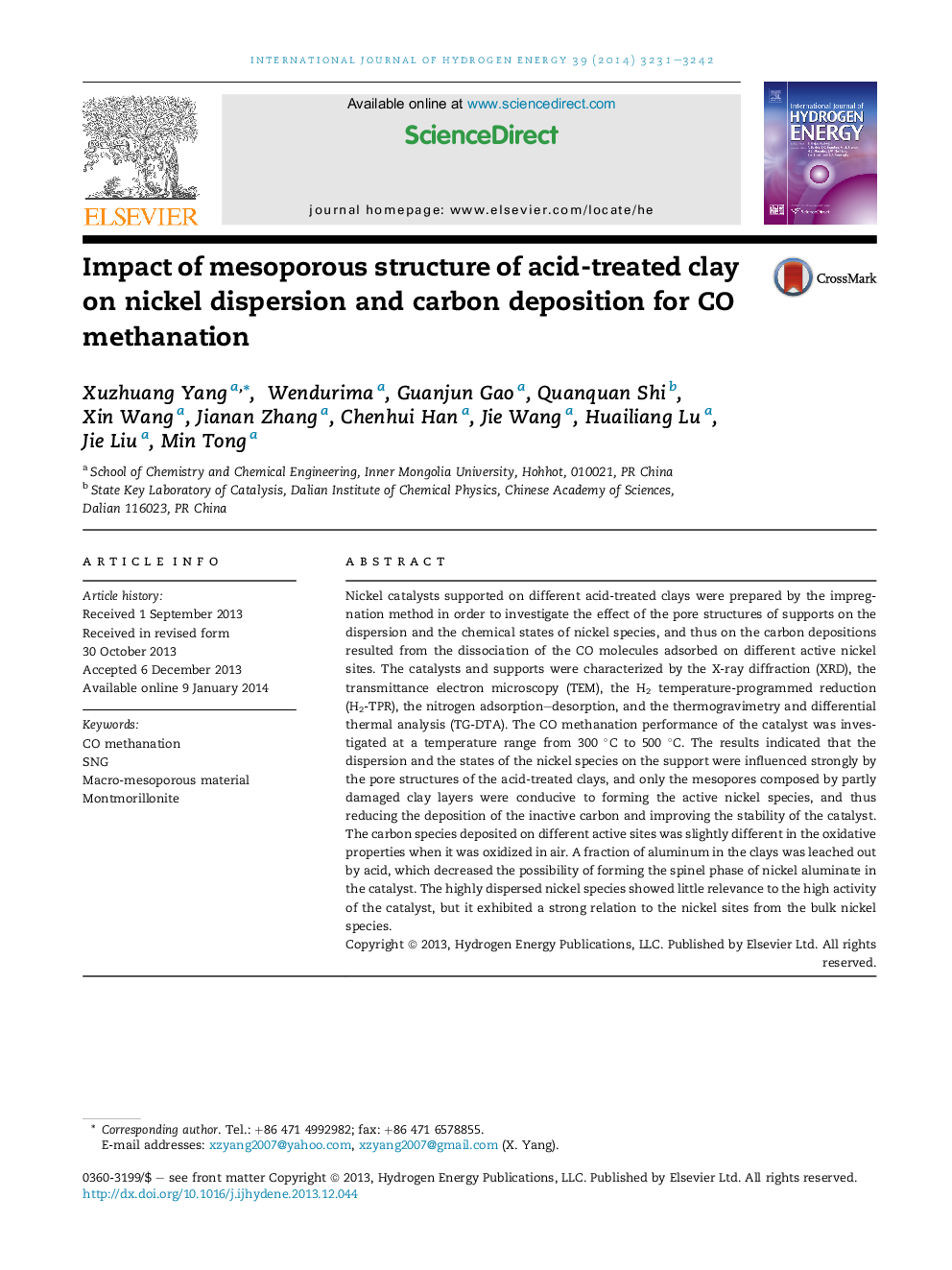| کد مقاله | کد نشریه | سال انتشار | مقاله انگلیسی | نسخه تمام متن |
|---|---|---|---|---|
| 1270628 | 1497502 | 2014 | 12 صفحه PDF | دانلود رایگان |

• An interconnected mesoporous structure composed by partly damaged clay layers was obtained by the hydrothermal treatment.
• The interconnected mesopores had the confinement effect and were conducive to the dispersion of nickel species.
• The interconnected porous structure reduced the deposition of inactive carbon.
• The carbon species deposited on different active sites was slightly different in chemical properties.
Nickel catalysts supported on different acid-treated clays were prepared by the impregnation method in order to investigate the effect of the pore structures of supports on the dispersion and the chemical states of nickel species, and thus on the carbon depositions resulted from the dissociation of the CO molecules adsorbed on different active nickel sites. The catalysts and supports were characterized by the X-ray diffraction (XRD), the transmittance electron microscopy (TEM), the H2 temperature-programmed reduction (H2-TPR), the nitrogen adsorption–desorption, and the thermogravimetry and differential thermal analysis (TG-DTA). The CO methanation performance of the catalyst was investigated at a temperature range from 300 °C to 500 °C. The results indicated that the dispersion and the states of the nickel species on the support were influenced strongly by the pore structures of the acid-treated clays, and only the mesopores composed by partly damaged clay layers were conducive to forming the active nickel species, and thus reducing the deposition of the inactive carbon and improving the stability of the catalyst. The carbon species deposited on different active sites was slightly different in the oxidative properties when it was oxidized in air. A fraction of aluminum in the clays was leached out by acid, which decreased the possibility of forming the spinel phase of nickel aluminate in the catalyst. The highly dispersed nickel species showed little relevance to the high activity of the catalyst, but it exhibited a strong relation to the nickel sites from the bulk nickel species.
The nickel species grows into larger nickel particles on the surface of the raw clay layers due to no space confinement. The size of the nickel particles dispersed on the mesopore structure composed by the partly damaged clay layers is moderate at a high nickel loading because of the confinement effect of the structure. The clay layers completely collapse into almost uniform clay fragments when the acid concentration is high. The confinement effect of such a pore structure is weak so that the nickel particles usually grow larger on such a support.Figure optionsDownload as PowerPoint slide
Journal: International Journal of Hydrogen Energy - Volume 39, Issue 7, 25 February 2014, Pages 3231–3242